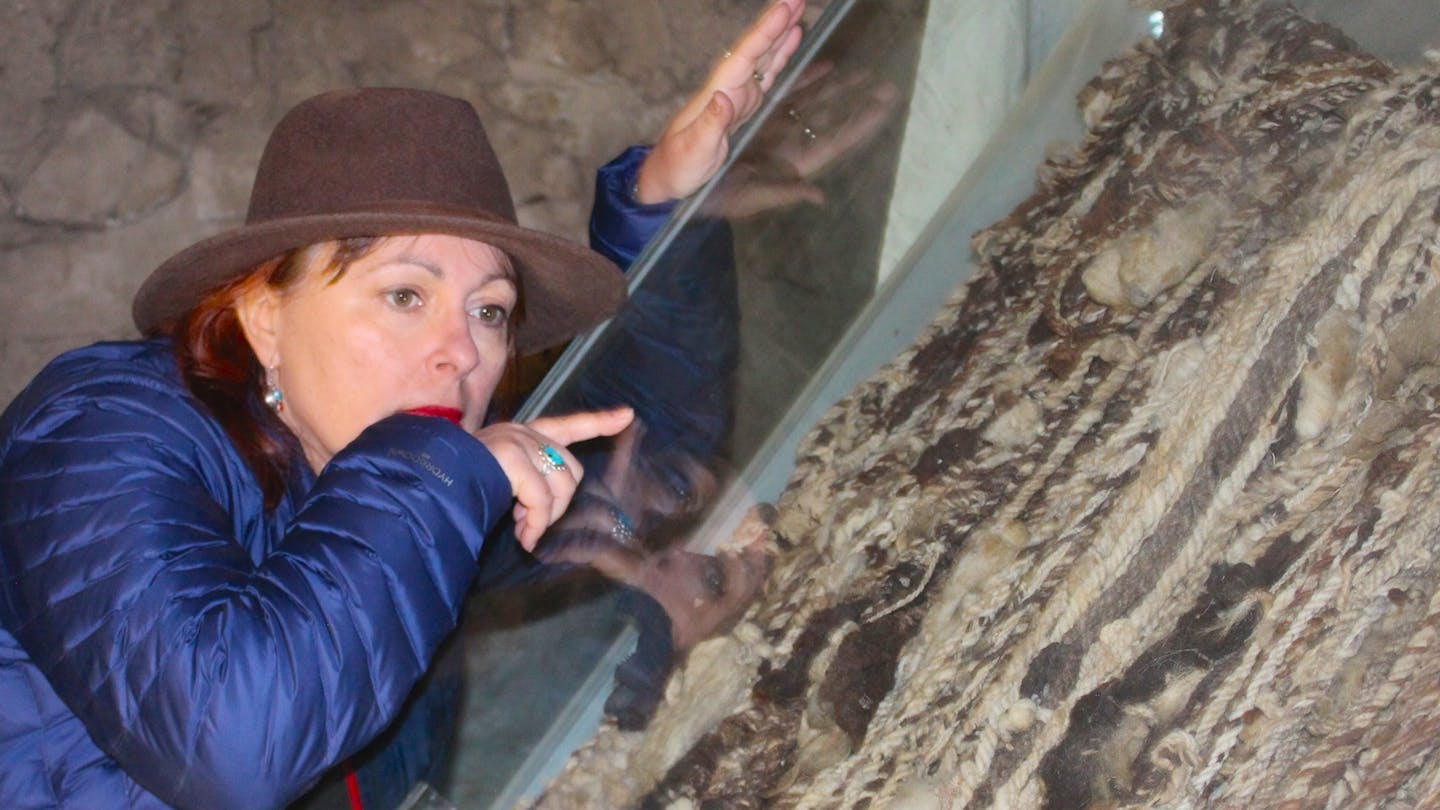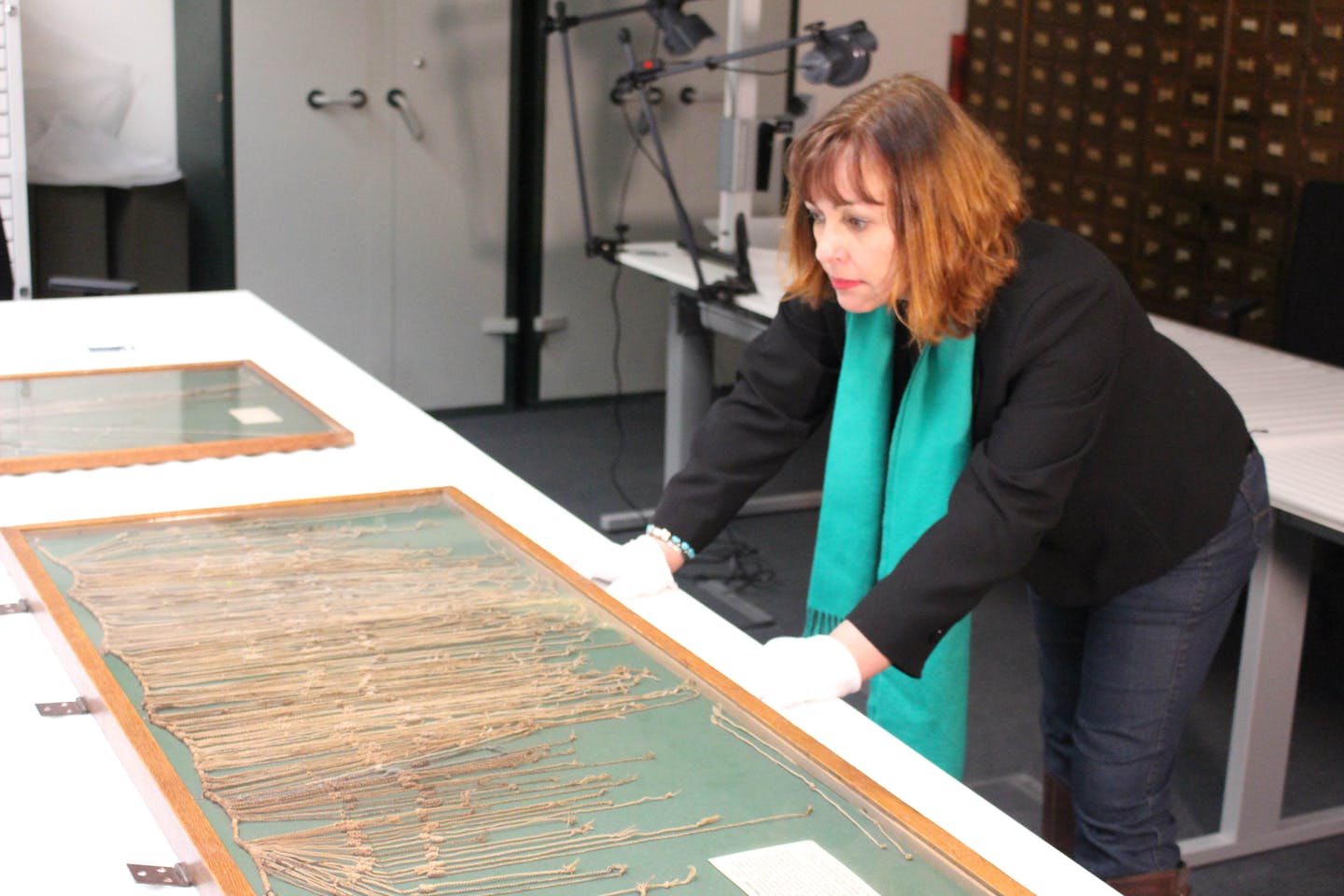
The people of the ancient Incan empire kept careful records of their economics, religion, demographics and history. Those records took the form of knotted cords called khipus.
Until now, researchers believed that the only people who knew how to make khipus in the Inca empire (circa 1400-1532) were very elite, high-status officials. With little direct evidence about the Inca khipu experts, researchers like myself have relied on descriptions by colonial Spanish chroniclers.
According to written sources, khipus were made exclusively by high-ranking bureaucrats who enjoyed the finest food and drink. In the Inca tradition, there was no distinction between “author” and “scribe”; both roles were combined into one.
The term used to describe an Inca khipu maker, “khipu kamayuq”, derives from the verb “kamay” which refers to creation in the sense of energising matter. Khipu experts – “kamayuq” – energised the khipus they made by imbuing the cords with their own vitality.
I head a team of researchers that has uncovered new evidence that commoners also made khipus in the Inca empire, meaning khipu literacy may have been more inclusive than previously thought. The key to this discovery is the realisation that khipu experts sometimes “signed” the khipus they made with locks of their own hair.
In Inca cosmology, human hair carried a person’s essence. A person’s hair retained his or her identity even when it was physically separated from the body. A child’s first hair-cutting, for example, was a major rite of passage. The hair removed in this ritual was given as an offering to the gods or kept in the house as a sacred object.
The Inca emperor’s hair clippings were saved during his lifetime; after death his hair was fashioned into a life-size simulacrum that was worshipped as the emperor himself.
Read more: The Inca string code that reveals Peru's climate history
Historically, when human hair was tied onto khipus, the hair was the “signature” of the person from whom the hair was removed. Our team observed this recently in the highland village of Jucul in Peru, where villagers possess over 90 ancestral khipus, some made centuries ago.
On the khipus of Jucul, human hair attached to the primary cord represents the people who made each section of the khipu. This accords with earlier findings that herders in highland Peru tied their own hair to khipus “like a signature”, signifying their responsibility for the information on the cords.
Personal objects tied to or otherwise incorporated into the primary cord represent the khipu creator or author. For example, on a 16th-century khipu from the Andean community of Collata, strips of a leader’s insignia scarf tied to the primary cord symbolise the man who authored the khipu, imbuing the khipu with his authority.
In contrast, when khipus contained information about multiple people, each person’s data was signified by a band of pendants of the same colour or by including hair from multiple people in the pendants.
Analysing the hair
Our team identified an Inca-era khipu, known as KH0631, with a primary cord made entirely of human hair from a single person. Until now, khipus have not been examined for the presence of human hair, so it is unknown how often they contain hair.
The human hair in KH0631’s primary cord likely represented the person who made the khipu, marking the khipu with this person’s authority and essence.
The hair in the KH0631 primary cord, 104cm long, was folded in half and twisted when the khipu was made. Assuming hair growth at 1cm per month, the hair represents over eight years of growth.
To learn about the person who made the khipu, we undertook simultaneous carbon, nitrogen and sulphur isotope measurements from a sample at the end of the cord.
The presence of the C4 isotope (instead of C3) generally indicates the consumption of maize in Andean diets; the relative levels of stable nitrogen isotopes allow us to make inferences about the proportion of meat in the diet; and the levels of stable sulphur isotopes enables us to determine the amount of marine food sources.
Because the hair was doubled over, the loose end included hair cut nearest the scalp and hair from the end of the tresses. This meant the sample represented two periods of the person’s life separated by eight or more years.
Isotopic analysis of carbon, nitrogen and sulphur in human hair has been used to determine the diet of ancient Andeans. The diet of high-status versus low-status groups in the Inca state differed greatly.

Elite people consumed more meat and maize-based dishes, while commoners ate more tubers, like potatoes and greens. To our surprise, isotopic analysis of the human hair in KH0631 revealed that this person had the diet of a low-status commoner, eating a plant-based diet of tubers and greens with very little meat or maize.
Sulphur isotope analysis shows little marine contribution to the diet, indicating that this person probably lived in the highlands rather than the coast. In the ancient Andes, elites feasted on meat and maize beer, while commoners dined on potatoes, legumes and pseudo-grains like quinoa. It appears that the khipu expert who made KH0631 was a commoner.
We don’t know where in the Andes KH0631 was made, so we tested the oxygen and hydrogen isotopes in the sample. Our results show that the person lived in the highlands between 2,600-2,800m above sea level in southern Peru or northern Chile (without better data on local water values, the exact location remains tentative).
This is the first time that isotopic analysis has been conducted on khipu fibres. The human hair “signature” in KH0631’s primary cord allowed us to learn more about the person who made this object.
Although other researchers have argued that only elite officials made khipus in the Inca empire, our new evidence suggests that commoners made khipus too – and that khipu literacy may have been more widespread than previously believed.
Looking for something good? Cut through the noise with a carefully curated selection of the latest releases, live events and exhibitions, straight to your inbox every fortnight, on Fridays. Sign up here.
This article is republished from The Conversation, a nonprofit, independent news organization bringing you facts and trustworthy analysis to help you make sense of our complex world. It was written by: Sabine Hyland, University of St Andrews
Read more:
- The Inca string code that reveals Peru’s climate history
- The Incas used mysterious stringy objects called ‘khipus’ to record data. We just got a step closer to understanding them
- How a pre-Incan civilisation thrived in the Atacama Desert thanks to seabird poo fertiliser
Sabine Hyland receives funding from the John Simon Guggenheim Foundation, the British Academy, the Leverhulme Trust, the British Museum and the University of St Andrews Impact Fund.


 The Conversation
The Conversation
 CNN
CNN The Week
The Week 104FM WIKY
104FM WIKY WCAX 3 Burlinton
WCAX 3 Burlinton KRWG Public Media
KRWG Public Media WTOC 11
WTOC 11 KOLN-TV
KOLN-TV AlterNet
AlterNet